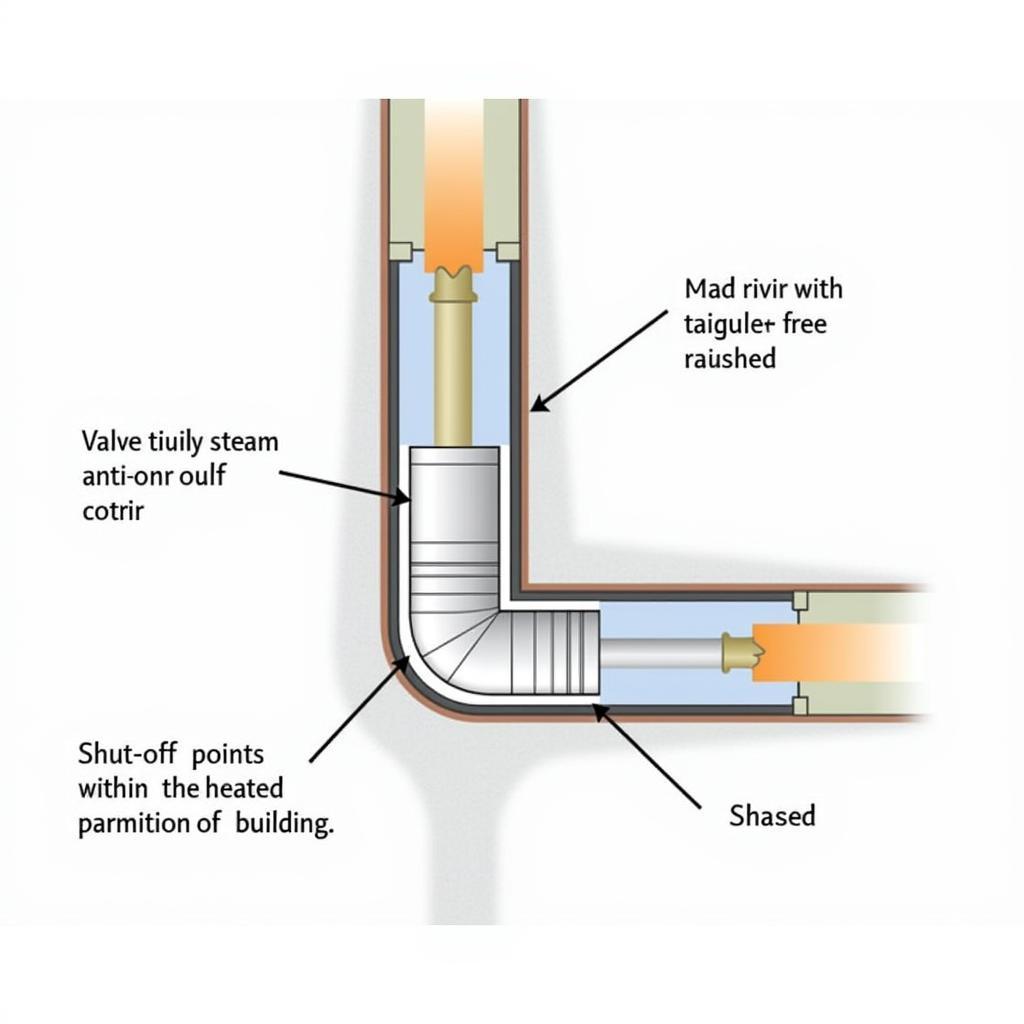Frost-free valves are an essential component of any outdoor plumbing system in areas that experience freezing temperatures. These ingenious valves are designed to prevent the most common plumbing nightmare: frozen and burst pipes. But how do they work their magic? And what should you know before installing one in your home?
Understanding the Need for Frost-Free Valves
Traditional hose bibs, while seemingly simple, become vulnerable when the mercury dips below freezing. Water left standing within the pipe can freeze, expand, and put immense pressure on the pipe walls. This can lead to cracks, leaks, and in extreme cases, a complete pipe burst. A frost-free valve eliminates this risk with its unique design.
 Frost-Free Valve Diagram
Frost-Free Valve Diagram
How Frost-Free Valves Outsmart the Cold
The key to a frost-free valve’s effectiveness lies in its long stem. Unlike standard valves that shut off the water flow near the exterior wall, a frost-free valve extends the shut-off point further back, typically within the insulated interior of your home.
When the valve is closed, the water residing in the extended stem automatically drains out, eliminating the risk of freezing and damage. This ingenious mechanism ensures that only air, not water, occupies the vulnerable section of the pipe exposed to the elements.
Types of Frost-Free Valves
While the core functionality remains the same, frost-free valves come in various configurations to suit different needs and plumbing setups. Let’s explore some common types:
1. Wall Mounted Frost-Free Valves
As the name suggests, these are installed directly on exterior walls and are the most prevalent type. They are ideal for supplying water to gardens, patios, and other outdoor areas.
2. Sill Faucets
Designed for installations above ground level, sill faucets are commonly found on decks and porches. They offer a convenient water source for potted plants and cleaning tasks.
3. Yard Hydrants
For larger properties or areas requiring a higher water flow, yard hydrants offer a robust and durable solution. They are installed directly into the ground and are typically equipped with a long handle for easy operation.
Choosing the Right Frost-Free Valve
Selecting the appropriate frost-free valve for your needs involves considering several factors:
- Climate: Ensure the valve’s freeze-proof rating aligns with the lowest temperatures experienced in your region.
- Plumbing Size: Match the valve’s pipe size (typically 1/2″ or 3/4″) to your existing plumbing.
- Application: Consider the intended use and choose a valve with the appropriate flow rate and features.
For instance, a 12 frost free hose bib might be suitable for a standard garden hose connection, while a hot and cold frost free hose bib would be necessary if you need both hot and cold water supplied outdoors.
Installation and Maintenance Tips
While installing a frost-free valve can be tackled as a DIY project, it’s crucial to follow the manufacturer’s instructions meticulously. Improper installation can negate the valve’s freeze-proofing capabilities.
Regular maintenance is equally important. Before the first frost each year, ensure the valve is fully closed and disconnect any attached hoses. This simple step allows any remaining water in the stem to drain completely.
“A properly installed and maintained frost-free valve is a silent guardian for your plumbing system, providing years of worry-free operation,” says John Smith, a licensed plumber with over 20 years of experience.
Conclusion
Frost-free valves are a simple yet ingenious solution to a common winter plumbing problem. By understanding how they work and choosing the right type for your needs, you can enjoy the convenience of outdoor water access year-round without the fear of frozen pipes. Invest in a frost-free valve and experience the peace of mind it brings during the colder months.
FAQs
1. Can I install a frost-free valve myself?
Yes, installing a frost-free valve can be a DIY project for those comfortable with basic plumbing. However, always refer to the manufacturer’s instructions and local building codes.
2. How long do frost-free valves last?
With proper installation and maintenance, a frost-free valve can last for many years, typically 10-15 years or more.
3. Can I leave a hose connected to a frost-free valve in winter?
No, never leave a hose connected to a frost-free valve during freezing temperatures. This can trap water and potentially damage the valve.
4. What should I do if my frost-free valve freezes?
If your frost-free valve freezes, turn off the water supply to the valve immediately. Then, try using a hair dryer on a low setting to thaw the valve slowly. If these methods fail, contact a licensed plumber for assistance.
5. Are there different sizes of frost-free valves?
Yes, frost-free valves come in various sizes, with 1/2″ and 3/4″ being the most common. Choose a size that matches your existing plumbing.
Need more information on frost-free valves or other plumbing solutions? Check out our other helpful articles:
Still have questions? Don’t hesitate to reach out to our team of experts! We’re available 24/7 to assist you. Call us at 0972669017, email us at [email protected], or visit us at 142 Trần Nhân Tông, Yên Thanh, Uông Bí, Quảng Ninh, Vietnam.